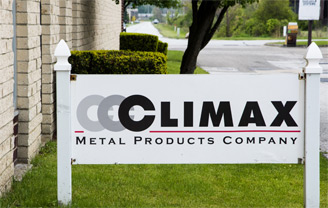What finishes does Climax offer on shaft collars?
2 CommentsBlack oxide finish on our mild steel collars is formulated as part of the total performance of the collar. The black oxide affects the anti-stick-slip characteristics and helps keep the torque rating of the screw within its design parameters. Black oxide also has corrosion
What is the industry standard for a shaft collar?
Leave a CommentWhile there is no formal industry standard for shaft collars, the dimensions of most manufacturers’ collars are fairly uniform. In most applications, the shaft collar bore (ID) is considered a critical dimension while other dimensions such as outer dimension and width are considered non-critical. Dimensions for Climax shaft collars can be found on our website […]
Why does a one-piece collar have a relief cut?
Leave a CommentThe relief cut removes some of the rigidity of a one-piece clamping collar to allow the screws to clamp more evenly and securely. A relief cut is important only on smaller bore collars because of the ratio of the screw to the collar material – the screw provides much of the clamp load. Climax puts […]
Why do clamping collars have face grooves?
Leave a CommentThe face groove on clamping collars indicates the face that should be placed against a bearing or other component requiring a perpendicular to bore orientation. For two-piece clamping collars, the face groove also helps keep the two halves of the collar properly oriented during installation.
Can a Climax shaft collar be welded?
Leave a CommentShaft collars can be welded with some exceptions. Mild steel and stainless steel materials contain sulfur and other additives which allow for welding. However, the lowest possible current and adequate ventilation should be employed. Be sure to remove screws before welding. However, in no cases should collars with zinc plating be welded. The welding process […]
What is axial holding power?
2 CommentsThe primary purpose of a shaft collar is to resist an axial load. That is to hold itself in place despite pressure along the axis of a shaft. The axial holding power is primarily a function of screw size and applied torque. However, other factors such as presence of oil, temperature, and the finish and […]
What is your axial load capability?
Leave a CommentCollar resistance to axial motion on the shaft is primarily a function of screw size. The tables indicate maximum static load that a collar will support without slippage. It is based on screws at full recommended seating torque, and for set screw collars, shaft hardness not exceeding Rockwell C35.
What is backlash?
Leave a CommentBacklash is the slop or play in a mechanism caused by gaps between the parts. Generally, this is defined as the amount of clearance in the device after motion is applied and before the mechanism activates. An example would be turning a steering wheel in a car, and feeling the loose motion before the steering […]
Climax Continues to provide the PT Industry with Engineered Shaft Locking Solutions
Leave a CommentClimax now offers a C801-Series Single Nut Locking Assembly Climax C801 Single Nut Locking assembly is designed to provide a high-capacity mechanical interference fit between components. The C801 locking assembly eliminates the need for keyways or cumbersome fits. It provides zero backlash and can be installed quickly due to the simple single nut tightening design. […]
What is the purpose of Abrasive Hardware?
Leave a CommentAbrasive hardware describes a group of tooling components that hold abrasive finishing products such as cartridge rolls, cut-off wheels, polishing buffs, wire brushes, and finishing wheels in place. Designs will vary depending on the abrasive product being used. Always remember to use recommended safety equipment when working with hand and power tools. For more information […]










